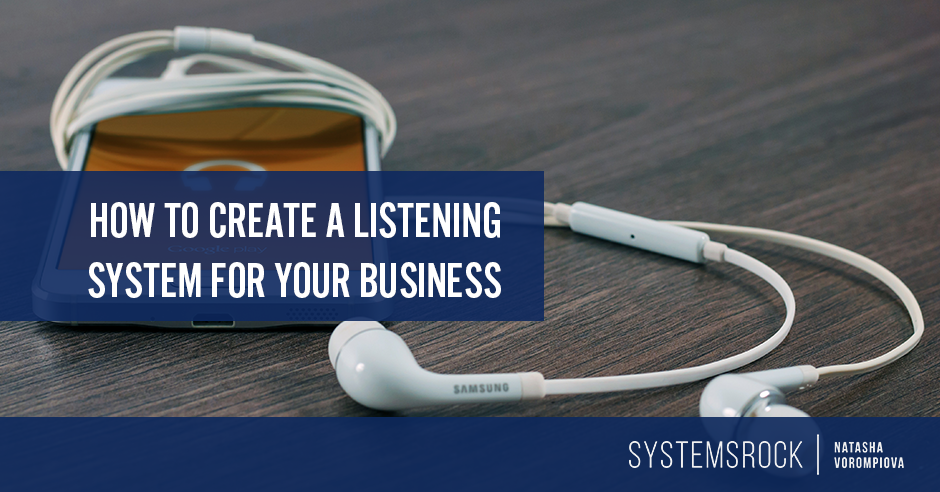When was the last time you really listened to your customers?
I’m not just talking about passive scrolling around on Twitter, but REALLY listening.
If you’re like many business owners who get overwhelmed by their daily to-do lists, it’s probably been a while.
That being said, you know listening to your customers is key. You care about what they’re saying.
But where should you start? How can you listen consistently instead of just binge-listening once a month?
Your first question to answer is: “Who are the people I should be listening to?”
In general, you’ll find that there are three categories of people you should be listening to:
- Your customers
- Your peers
- Industry influencers
Two Ways to Integrate Listening into Your Daily Routine
Filter what you’re listening to.
Choose a few select people in your client base, industry, and influencers. This focused, productive approach to listening will reveal patterns that connect to products you’re thinking of creating or articles you’re considering writing.
Carve out time every day for listening.
Make your listening effective by turning it into a daily ritual–anything from 15 minutes to one and half hours is great.
This ritual prevents you from being distracted by Facebook or Twitter throughout your workday and gives you dedicated time for thinking about, absorbing, and connecting new ideas.
Three Steps to Create a Listening System
Step 1: Set up your social media channels as listening portals.
Use the social media channels you already know and love as one of your portals.
Organize the way you listen.
For example, if you love Twitter, make one list for clients and customers, one for peers, and one for industry influencers.
If you’re using Facebook, create an interest list of the pages you follow in each of the categories – your audience, peers, and influencers.
Use a similar concept on Google+ by creating circles.
Set up the social media channels you already use as listening portals. You’ll be able to update your status, engage with your community, and listen conveniently in one place.
Step 2: Use an RSS Reader.
Consider setting up an RSS Reader (newsreader), like Feedly, or a tool that saves articles you want to read later, like Instapaper or Pocket.
Feedly can save you time because once you choose the sites and blogs you like to read, it automatically updates them for you. You can save them for later if necessary.
Using an RSS Reader or saving articles and videos for later, lets you keep and reference valuable information that can help you and your customers make progress.
Step 3: Transform listening into action using Evernote or Asana.
Listening is great for understanding your customer on a deeper level and keeping your finger on the pulse of your industry. All of the data you’re taking in can be used for potential products, article ideas, social media updates, or even additions to your methodology.
Once you read an article or watch a video that touches on something you want to remember or implement, use a system like Evernote or Asana to take notes or create a task with relevant links and quotes.
This can support you in transforming what you’re sharing into programs or articles that can help your customers solve their problems.
Incorporate Your Interests
When it comes to listening, you don’t have to make it all about business.
Incorporate the other interesting things like comedy, creativity, or gossip updates. Explore social media in bursts, so you can add fun to your day and blend your personality into your content.
Back to You
What are you currently doing to listen to your audience, peers, and influencers? What do you want to try?


